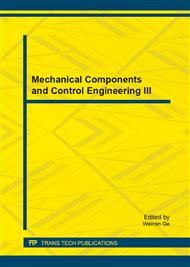p.1029
p.1033
p.1037
p.1041
p.1045
p.1050
p.1055
p.1059
p.1064
An Improved Blind Deconvolution Algorithm of Motion Blurred Image
Abstract:
An improved blind deconvolution algorithm has been proposed to tackle the image blurring caused by movement. Firstly, take the model to analyze the blurred image and identify the high-frequency of the blurred image through the reasonable pre-estimation of blind kernel function. Then, further estimate the blurring matrix K by the use of the high-frequency while the high-frequency of the blurred image and the accuracy of the blurred image matrix have been improved gradually through normalized iteration. Finally, the clear image has been gained by the use of blind matrix deconvolution. Experimental results show that by the use of this algorithm the image has better subjective visual effect. The proposed algorithm has better restoration effect on the fused motion blurred image and the natural camera motion blurred image.
Info:
Periodical:
Pages:
1045-1049
Citation:
Online since:
October 2014
Authors:
Price:
Сopyright:
© 2014 Trans Tech Publications Ltd. All Rights Reserved
Share:
Citation:


